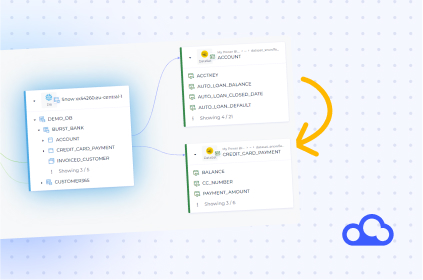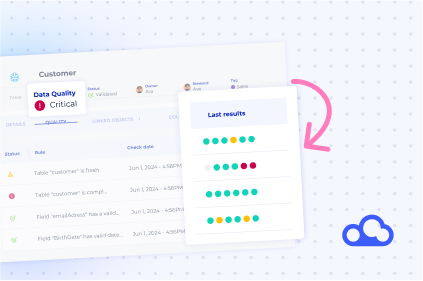In the era of big data, understanding and implementing effective data management best practices is crucial for businesses of all sizes. Companies that can effectively manage, analyze, and leverage their data stand a better chance of staying ahead of the curve – Especially considering the sheer volume of data being generated every day in industries around the world.
This article dives deep into eight data management best practices that could significantly improve your data management strategy, allowing for better decision-making, improved operational efficiency, and increased competitive advantage.
1. Data Governance
Data governance serves as the bedrock for efficient data management. It involves the creation of policies, procedures, and standards that guide how data is created, stored, utilized, and disposed of. A well-structured data governance framework ensures the quality, integrity, and security of data, thereby preventing potential data mismanagement.
Moreover, data governance ensures that all data-related activities are aligned with the overarching objectives of the company and are in compliance with regulatory requirements. By doing so, data governance provides a structure that allows for the effective management and strategic use of data, empowering businesses to make informed decisions, enhance operational efficiency, and improve overall performance. Therefore, implementing robust data governance is a key step in adopting the best practices for data management.
2. Data Quality Management
Data quality management is a crucial component of effective data handling. It involves a range of procedures and technologies aimed at ensuring the accuracy, completeness, timeliness, and consistency of data. The importance of maintaining high-quality data cannot be overstated, as poor data quality can lead to misleading insights and consequently, erroneous business decisions.
Key processes under data quality management include regular data auditing to identify inconsistencies or errors, data validation to ensure accuracy and relevance, data cleansing to rectify identified errors, and data enrichment to enhance the value of existing data. In essence, data quality management practices ensure that businesses have reliable, high-quality data at their disposal, facilitating effective decision-making and strategic planning.
3. Master Data Management
Master data management is a strategic approach to data management that focuses on defining and managing the critical data of an organization in a way that provides a single point of reference. By creating a unified, accurate, and consistent view of core business data – such as information about customers, products, suppliers, and assets – master data management helps eliminate data inconsistencies and reduce errors.
The ability to provide a 360° view of a business is one of the key benefits of master data management. It ensures that everyone in the organization is working with the same, up-to-date, and accurate set of data, thereby improving collaboration, decision-making, and operational efficiency. Therefore, master data management is a critical element in best practices data management as it contributes significantly to the organization’s overall data strategy.
4. Data Security
In a world where data breaches are increasingly common, data security is a vital element and best practice for data management. It involves the implementation of measures designed to protect data from unauthorized access, corruption, theft, or loss. These measures can include encryption to safeguard sensitive data, implementing robust access controls to restrict who can access certain data, ensuring network security, and establishing regular data backup protocols to preserve data in the event of loss or damage.
Importantly, data security isn’t merely a best practice – It’s a legal requirement in many jurisdictions due to strict data protection laws. Consequently, maintaining strong data security isn’t just about protecting your organization’s information – It’s also about regulatory compliance and maintaining customer trust.
5. Data Privacy
Data privacy is a critical concern in the modern data landscape. It goes beyond securing data from unauthorized access – It involves ensuring that the data collected and used by an organization is handled in a fair, ethical, legal, and transparent manner.
Key elements of data privacy include implementing measures like anonymization and pseudonymization to protect individual identities, respecting users’ consent regarding data usage, and adhering strictly to data protection laws and regulations. In essence, proper data privacy practices respect the rights of individuals while allowing organizations to leverage data for business benefits ethically.
6. Implementing a Data Architecture
Having a well-defined data architecture is crucial for effective data management. This involves creating a blueprint or framework for how data is collected, stored, processed, accessed, and used within an organization. It lays out the methods for organizing, integrating, and administering data, and it dictates how data flows through an organization, from ingestion to disposal.
A well-designed data architecture not only simplifies data management but also ensures that the data is easily understandable and usable by different business units. It promotes data consistency, improves data quality, and makes it easier to integrate new technologies and data sources. Moreover, a good data architecture serves as a roadmap that guides the organization’s data strategy, contributing significantly to the effectiveness of data management practices.
7. Leveraging Technology
The advent of technology has revolutionized the landscape of data management. Today, a wide array of tools is available that have rendered data management more efficient, streamlined, and insightful. These technologies include data warehousing, which provides a central repository of data, data mining for discovering patterns in large datasets, and machine learning algorithms for predicting future trends based on existing data.
By leveraging technologies, businesses can automate complex processes, significantly reducing the risk of errors while boosting efficiency. Moreover, they can unearth deeper insights from their data, driving more informed business decisions. Therefore, incorporating these advanced tools into their data management strategy is crucial for businesses seeking to stay competitive in today’s data-driven marketplace.
8. Continuous Training and Improvement
Effective data management is an ongoing journey, not a destination. It requires continuous effort, regular audits of existing practices, and the willingness to make necessary improvements. This also includes providing regular training for staff to ensure they stay up-to-date with the latest data management technologies and best practices.
Regularly revisiting and updating data management practices not only helps maintain high data quality but also ensures alignment with evolving business goals, regulatory changes, and advancements in technology. Furthermore, regular staff training reinforces the importance of good data management practices and equips the team with the skills necessary to handle evolving data management challenges effectively.
Conclusion
Data is a valuable resource that can provide a competitive edge when managed correctly. These data management best practices provide a roadmap to manage data effectively, ensuring high data quality, secure data, compliance with regulations, and efficient data operations.
Interested in learning even more about using your data as an asset to achieve higher levels of data governance and data quality? Book a demo today to get started on your organization’s journey to complete data lifecycle management with DataGalaxy!





